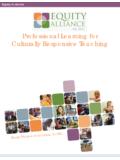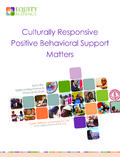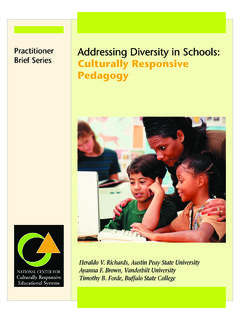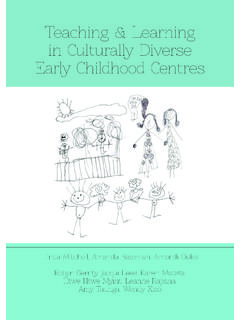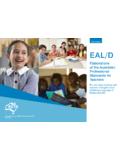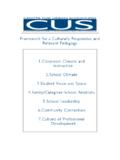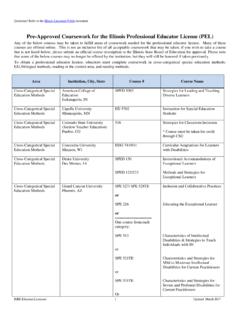Transcription of Your early learning guide for infants, toddlers, and …
1 Your early learning guide for infants, toddlers and three-year-oldsYour early learning guide for infants, toddlers, and three-year-oldsThe Texas infant , toddler , and Three-Year-Old early learning Guidelines were developed through a collaboration between the Texas early learning Council and a group of Texas stakeholders committed to improving school readiness in Texas early learning Council is housed at the Children's learning Institute, University of Texas Health Science Center at Texas infant , toddler , and Three-Year-Old early learning Guidelines are endorsed by the1 Purpose of the infant , toddler , and Three-Year-Old early learning Guidelines.
2 3 Background ..5 Texas infant , toddler , and Three-Year-Old early learning Guidelines Writers ..6 Texas infant , toddler , and Three-Year-Old early learning Guidelines Stakeholder Group ..7 How this Document Is Organized ..8 Texas infant , toddler , and Three-Year-Old early learning Guidelines Organization ..9 Responsive Caregiving ..10 What Is Responsive Caregiving? ..10 Why Is Responsive Caregiving so Important? ..11 How Can Caregivers Be Responsive? ..11 How Responsive Caregiving Supports learning ..12 Caring for Young Children with Disabilities or Special Needs.
3 13 Culturally Appropriate Practice in early Childhood Settings ..16 Physical Health and Motor Development ..21 Health and Well-being ..24 Gross Motor Skills ..26 Fine Motor Skills ..27 Physical Health and Motor Special Needs Scenarios ..29 Social and Emotional Development ..33 Trust and Emotional Security ..36 Self-Awareness ..38 Self-Regulation ..41 Relationships with Others ..43 Social and Emotional Special Needs Scenarios ..45 Language and Communication Development ..49 Listening and Understanding ..51 Communication and Speaking.
4 54 Emergent Literacy ..56 Language and Communication Special Needs Scenarios ..59 Cognitive Development ..63 Exploration and Discovery ..65 Problem Solving ..67 Memory ..69 Imitation and Make Believe ..71 Cognitive Special Needs Scenarios ..73 Key Terms and Definitions ..77 early learning Resources ..83 Bibliography and Key Resources ..87 Table of Contents23 Purpose of the infant , toddler , and Three-Year-Old early learning GuidelinesThe Texas infant , toddler , and Three-Year-Old early learning Guidelines were created to help Texans understand what very young children should know and be able to do at different points in their research is clear.
5 The first three years of life are the most important years. During this period, brain development occurs at a very rapid rate in response to each child s early experiences. The quality of these early learning experiences is shaped by two factors: the caregiver with whom the child spends his or her time and the child s environment. A caregiver can be an early childhood professional, parent, grandparent or anyone who has the responsibility of caring for a child s needs. Caregivers must do everything in their power to ensure that this critical phase of human development is full of healthy, rich, and stimulating experiences because strong and powerful brains are created during these years.
6 The brains of these young children are highly active. In fact, by age three, human brains have accomplished 80 percent of their growth!Each child is born with billions of brain cells, known as neurons. Each of these neurons has branch-like arms called dendrites. Through the branching of dendrites, all of the various areas of the brain send signals and process information across microscopic gaps called synapses. These synapses serve as connections and pathways for signals and are the manner through which brains develop. As the brain matures, it is constantly forming new connections and trimming away ones that are not in process of making connections and trimming away others is how the brain responds to its environment.
7 Young children who have rich, diverse, and comforting experiences build strong connections that support lifelong success in learning and good emotional health. Unfortunately, many young children do not have optimal early experiences, and as their brains develop, connections needed for lifelong success are trimmed Guidelines were created to move Texas forward in ensuring that all children have the high-quality early experiences needed for optimal brain development. There are approximately 1900 days between the day a child is born and the day he or she enters kindergarten.
8 Every day is a critical opportunity to support the healthy development of each child. These Guidelines are designed to assist caregivers in understanding early childhood development and in making the most of each day during the early years of is our hope that the Guidelines will improve the quality of care for young children inside and outside the home by supporting appropriate caregiver practices. The Guidelines describe expectations about what children should know (understand) and be able to do (competencies and skills) across domains of learning during specific age ranges, as well as what steps caregivers should take to support healthy Potential Users and Uses of the GuidelinesUsersThe Guidelines can be used to.
9 Parents Learn more about where their children are developmentally guide adult behavior in supporting early childhood learning and development Assist in choosing toys and materials to support learning and development Ensure their early childhood program is providing developmentally appropriate care to their young children Assist in understanding how to be responsive to the needs of their young childrenProviders ( early childhood teachers, educational specialists, early childhood administrators) Learn more about how young children develop at different stages Implement and adapt strategies to support learning and development for all young children Assist in planning learning experiences and selecting curriculum Assist in choosing play materials to support the learning environment Individualize care and create individual lesson plans for young children Inform professional practice in working with young childrenPolicymakers (state agencies, program administrators, legislators)
10 Learn about best practices for caring for young children Provide resources for parents and caregivers to support the learning and development of young children Gain understanding of the professional knowledge needed by those working with young children Review practices and standards to ensure they support young childrendevelopment. They are intended to positively influence the design of professional development strategies, parent engagement, administrative planning, key class materials, and curricula. Above all else, the Guidelines are a learning tool for caregivers.
